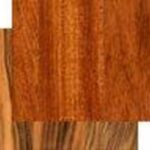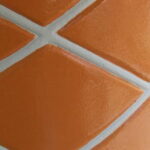Do-it-yourselfers who attempt to sand their own wood floors encounter most problems with use of a drum sander. Horror stories abound of how the sander can leave waves and drum marks in the floor. I am a wood flooring instructor and I would like to share some tips with you that can make a huge difference in the end result of your home improvement project.
How to choose the right drum sander for your project is the first thing I would like to share with you. There are basically two types of drum sanders–a tip machine and a lever machine.
The Tip Machine.
Tip machines are the type of machine most often offered by rental companies. They have fewer moving parts which make them less expensive to manufacture than lever machines. This means the tip machine costs less to purchase. Thus, the tip machine is very attractive for rental companies. But they also have some built in problems.
The tip drum sander is designed much like a garden tiller. Two wheels are located side by side similar to those on a garden tiller, with the drum on the sander being in place of where the tines would be on a garden tiller.
The drum is lifted by pushing down on the handles. It is lowered by pulling up on the handles. You need to start by pushing the machine so it is in motion when it touches the floor.
As soon as the sandpaper touches the floor it starts pulling you. This forces the necessity of switching the action from pushing to pulling. The operator will need to provide resistance by holding back on the handles while at the same time pulling up on the handles. This trick at the start of sanding must be done over and over.
Stopping at the wall is equally as complicated. You must push down on the handles to lift the sandpaper off the floor which means the sandpaper stops touching the floor and the machine stops pulling the machine. At the same time the operator must switch from pulling up on the handles to pushing down on the handles Then you must change from pulling back on the handles to pushing on the handles so the machine moves past the point where the sandpaper leaves the floor.
Think of the wheels on an airplane leaving the runway with the drum being the wheels. Moving away from the wall has an equally challenging transition from pulling to pushing and lifting.
For these reasons, I don’t recommend a tipdrum sander for anyone.
The Lever Machine.
In my opinion, a lever machine is much better for sanding floors. Professionals use a lever machine and it is possible to rent a smaller version of the lever machine that professionals use.
A lever machine has two wheels like the tip machine AND a swivel wheel closer to the handles. These three wheels support the whole machine. The lever allows the drum to be lowered from the chassis supported by the three wheels. Think of a large bucket loader used in road construction. A lever raises and lowers the bucket rather than allowing the whole machine to tip. This machine uses much the same idea.
I use a girth for a horse saddle that contains a metal ring on each end. I tie two ropes to the rings and loops to slip on the handles of the floor sander. It looks similar to the one pictured with this article.
I add a third rope to tie the girth around my waist much like wearing a belt. By attaching the girth to the handles my legs do all the resistance for the pull of the sander. Since my legs are my strongest muscles this means I am not using my back, shoulders, arms, and hands to hold the machine back. This not only makes the job easier but makes the resistance much more consistent.
With one hand on the handles, it requires only a small push until the sandpaper takes over and pulls. With the other hand, the operator will be able to raise and lower the drum. Pulling up on the handles is eliminated because the weight of the sander does all the downward pressure.
To use a lever drum sander attach the ropes to the handles so that the left loop attaches to the right handle and the right loop attaches to the left handle. In other words the two ropes cross. Loop the power cord through the little triangle that the ropes form so it is easy to find so you don’t need to keep looking for it while you are sanding the floor.
Tip #1:
My recommendation to you is to place a scrap piece of plywood on the floor and practice sanding the plywood before actually starting to sand the floor on a refinish job. If you are installing a new, unfinished floor, take a bit of time to practice sanding the subfloor before you begin to install the floor. It is worth renting a machine for a day to practice sanding before installing your floor. Not only will you get the experience and be more confident with sanding, but it will also provide you with a cleaner, flatter subfloor to install on.
Tip #2:
To start sanding I recommend turning the sander on in the middle of the floor with the drum off the floor. Push the sander with your left hand so the ropes are tight and then push the sander toward the first wall. Ease the drum to the floor with your right hand on the lever as you push the drum sander forward. Think of landing an airplane on a runway.
As the sandpaper touches the floor is will take over the movement of the sander and you need only to hold it back with your legs using the girth and ropes attached to the machine.
As you get to the wall you need to lift the drum off the floor with the lever using your right hand and with your left hand push the machine past the place where you hear the sandpaper stop sanding. You need to move it a half inch to an inch past where it stops sanding. When you back away from the wall, pull with the ropes and slowly lower the drum with the lever while the machine is being pulled back. With practice you can have the sandpaper touching the floor while only pulling the machine backwards a half inch to an inch.
When you get back to the center of the room with the sander pull back past where you hear the sander stop sanding when you lift the drum off the floor with the lever.
Using your left hand keep the ropes taut and move the sander half a drum width to the left or right and push the sander forward until you hear it starting to sand again.
Don’t try to rush your sanding project. Beautiful floors will shine through with patience and attention to detail. Ninety percent of drum sanding is listening and feeling for the rhythm of the machine. See the pictures included with this article to see how I am using the girth to hold the sander back. In viewing the belts, note the belt to the left powers the drum; the belt to the right runs the vacuum. The two parallel wheels are below the motor. A rental machine is very similar to this, only smaller.
Best of luck with your wood floor refinishing project!






